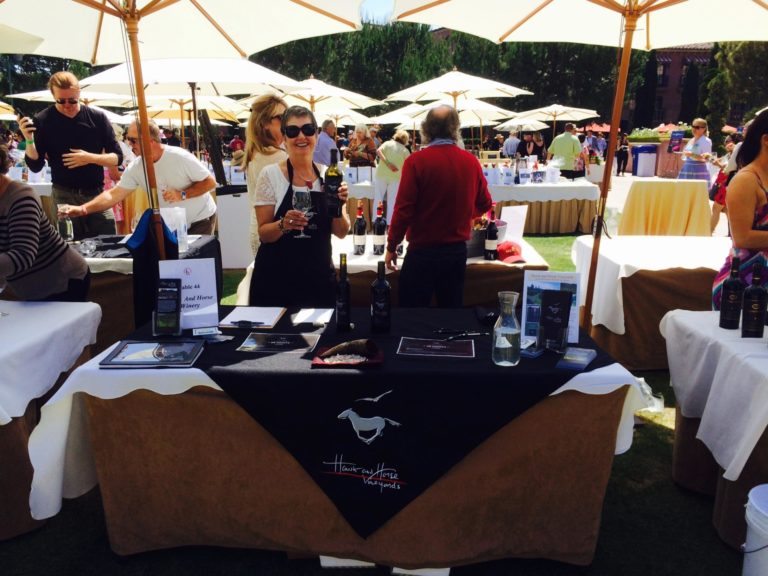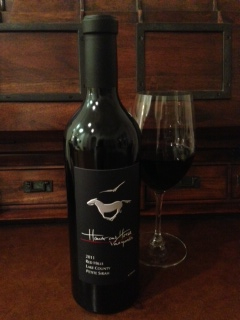
We all have aspects of ourselves that we find a bit embarrassing. I don’t mean the physical stuff. Or those cell phone pictures we never should have sent. Or that Hanson sweatshirt hidden in your bureau drawer. I mean intrinsic tastes that we can’t change.
For me, it’s this: I dislike wine. What could be more uncool in a native Californian who writes about the food-and-drink scene, has spent long sunny months in France, Spain and Italy and lives within sight of the Napa Valley? Call me an unworldly hack, but I’ve tried and tried and yet nearly all reds, whites and rosés taste alike to me — and I find that taste harsh. I think I’m not alone in this. I think more of us dislike wine than want to admit it. And that’s our “inconvenient truth.”
Having been told by wine experts that the more I sipped, the more sensitized my palate would become, I was dragging myself around a “wines of Spain” gala in San Francisco one day, feeling like a rank imposter, when I happened upon a sherry booth. My first sip of Pedro Ximénez was like stepping off a cliff into a magical radiant room-temperature pool of enchanted electric honey. Suddenly I realized: I do like wine. Sweet wine. And sweet wine is wine.
Wine snobs tend to dismiss, discount and disrespect sweet wines — because, in their eyes, anything sweet smacks of childishness, and anything so simply sumptuous and uncomplicatedly easy to like can’t be trusted, thus (to them) sweet wines are the vinicultural equivalent of Kool-Aid. But sweet wines have held crucial roles in world civilization since ancient days: Used in religious rites, praised in poetry, these are the liquids of prayer and love.
Thus began my sweet-wine quest. In the ensuing months I sampled Marsala in the Sicilian seacoast town for which it is named. Also in Sicily, I discovered passito — a type of concentrated naturally sweet wine made from exotic, golden-green Zibibbo grapes, aka Muscat of Alexandria, which are allowed to dry into luscious raisins before being fermented. At the Firriato winery on Mount Etna’s eastern flank, I tried airy L’Ecru passito, named for the straw whose hue it evokes.

At the Donnafugata winery on volcanic Pantelleria, an Italian island closer to Tunisia than to Italy (and where Giorgio Armani has a home-away-from-home), I sipped award-winning amber-colored Ben Ryé passito after touring the vineyards where Zibibbo were being harvested and the hot, windswept platforms where the grapes are laid to dry.
“Only the best grapes get dried,” Donnafugata’s technical director Antonio Rallo — who operates the winery with his jazz-singer sister José and their parents Giacomo and Gabriella — told me. “We’re not trying to capture the flavor of the fresh grape but rather to dry the grapes under the sun in the wind to create an aroma that is completely different from that of the fresh grapes. This is our philosophy: not to preserve the aromas of the fresh grape but to find the new aromas of the dried grape.”

Paired with sharp cheeses at Ristorante Cibus in the medieval hill town of Ceglie Messapica in Italy’s “heel,” I sampled Aleatico, a subtly sweet local red the color of garnets that is made at the nearby Tenute Rubino winery.
Home again and still pursuing my quest, I sipped Jewish ceremonial wine, Oregon ice wine, German Gewürztraminer, Portuguese Madeira and Port and fortified biodynamic Port-style Latigo wine made by California-based, family-owned Hawk and Horse Vineyards. Now I know: Sweet wines are the wines for people who think they hate wine. (Wine snobs probably like sweet wine too, but won’t admit it. And that’s their inconvenient truth.)
Do you like maple syrup? Freshly squeezed fruit juice? Bold, exotic kombucha? Apple pie, butterscotch custard, cherries jubilee? Then you’d probably like sweet wine, which offers all the simple, tingly-tangy excitement of those things — plus a fermented, barrel-aged je-ne-sais-quois.
Hawk and Horse winery manager Tracey Hawkins calls jewel-red, smoky rose-scented Latigo “a special favorite of mine. I crafted it based on my memories of the Ports I enjoyed on a visit to Portugal when I was in my very early twenties,” Hawkins told me.
“We make it in the traditional Port-style,” said Hawkins, “Harvest late with high sugars and then fortify with high proof. We use a very expensive, oak-aged brandy for our high proof because nothing less would do.” Hawkins uses Latigo in treasured recipes for poached pears, sweet-potato pie and flourless chocolate soufflé.
Aging the wine in new French oak barrels “gives it caramel notes and extraction. We get such a great response to the Latigo at tastings,” Hawkins said. “People who love Port end up loving it — and people who say they don’t usually like Port also end up loving it.”
How sweet.
Photographs by Kristan Lawson





